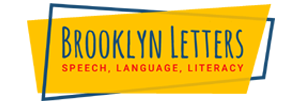My current blog is devoted to outlining the basic elements of cognitive-behavioral therapy or CBT for your school-aged child. Anyone who has read my earlier blogs, can see that I've written about elements of CBT for the preschool child. I've outlined labelling feelings and emotions, validating feelings in others, and shaping behavior through basic behavioral change strategies. Many of the skills used for preschool children can be applied to older children or serve as the building blocks for more advanced CBT skills.
Some of the unique features of CBT for ages 7-12 are most effective in children with well-developed cognitive and memory skills. For children to make the best use of CBT, they need to have the capacity for self-observation, self-monitoring, and independent reporting of their internal states and responses to interventions. Parents still play a central role in treatment, however, they serve more as a coach and support to their child throughout therapy. Oftentimes, children will be expected to teach certain relaxation skills to their parents and may be asked to guide their parents through certain exercises during sessions. Below I ll highlight some of the most common elements of CBT for children. Note that this list is not exhaustive and that your child's treatment may differ depending on their particular therapist, diagnosis, and/or symptoms.
Psychoeducation Because school-aged children can understand and process information, they will likely receive lots of psychoeducation about treatment. Psychoeducation is a big word to describe the information your child receives about his/her condition, the factors that contribute to symptoms, issues that help improve symptoms, or things that may worsen his/her symptoms. Children at this age are able to process simple explanations of research on how and why treatment works and information about what to expect in therapy. This often helps children feel more motivated and in control of their treatment. Parents often appreciate and benefit from this information as well.
Self-observation and monitoring As a way to get a better understanding of your child's mood, situations that trigger certain symptoms, behaviors, or thoughts (or cognitions) you and your child may be asked to keep a simple record of these things on a daily basis for a brief period of time. Your therapist may give you a printed chart to fill out in between sessions or may ask you to record things via digital methods (such as in a Google document) or an application (accessed via phone/tablet). In the beginning stages of treatment, your therapist will use this information to design the skills that he/she may need to focus on in therapy. This information also helps a therapist determine whether or not therapy is working to make changes in your child's symptoms.
Positive self-statements Your therapist may work with you and your child to come up with a group or list of statements that help him/her feel hopeful, motivated, and likely to continue treatment when things are tough or he/she is being asked to do something that feels unnatural. For example, a child may be asked to practice learning new breathing patterns or using long muscle relaxation exercises. Many children find these to be tedious and boring for a brief period until these exercises become second nature and start to feel more natural to them. Positive self-statements or cheerleading statements are often generated with your child using his/her language. These are typically brought home from a session and posted in a highly visible place in your home. Children and parents are asked to look at and read these statements aloud on a regular basis so that they become committed to memory and become second nature.
Cognitive Restructuring – This term refers to the process by which individuals learn to change unhelpful or overly negative thoughts. For children, this process can be complex as they are asked to learn to recognize their own faulty thoughts, how to evaluate their thoughts for accuracy, and how to generate thoughts that are helpful in reducing distress and improving their overall mood. In session, they learn about the connection between thoughts, feelings, reactions, and behaviors and learn how to apply these principles to various scenarios. These mostly abstract concepts are illustrated through the use of cartoon strips, stories, videos and other methods. Children first practice generating helpful and realistic thoughts for fictional characters in the stories, videos, etc. They move from applying thought modification in fictional characters to changing thoughts about themselves. In sessions, children receive lots of coaching and guidance from a therapist to master the different steps in the cognitive restructuring process. After going through this gradual process and if treatment is effective, children and parents will notice that negative thoughts are less frequent or altogether non-existent. Parents can be valuable partners in this process by helping children to recognize, evaluate, and change their own thoughts outside of the therapy office where most negative thinking and meltdowns are likely to occur. Cognitive restructuring is a highly valuable and central skill in CBT that often requires lots of repetition in children.
The skills above are some of the most common elements of CBT along with the skills reviewed in my earlier blogs such as relaxation training and behavior management skills. There are other elements of cognitive behavioral therapy that are specific to certain conditions such as systematic exposure for anxiety, exposure and response prevention for OCD, and structured problem-solving for other conditions that are not covered in this blog. Look for future blogs that highlight how other CBT treatment interventions can be helpful for you and your child.
Craig Selinger
Latest posts by Craig Selinger (see all)
- Private-Pay NYC SETSS: Special Education Teacher Support Services - June 29, 2022
- 7 Do’s and Dont’s of Teaching Self-Control to Young Children - June 11, 2022
- 8 Tips to Help Parents Practice Positive Parenting - June 11, 2022
